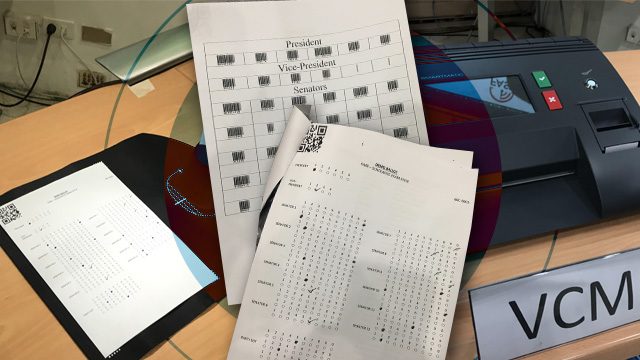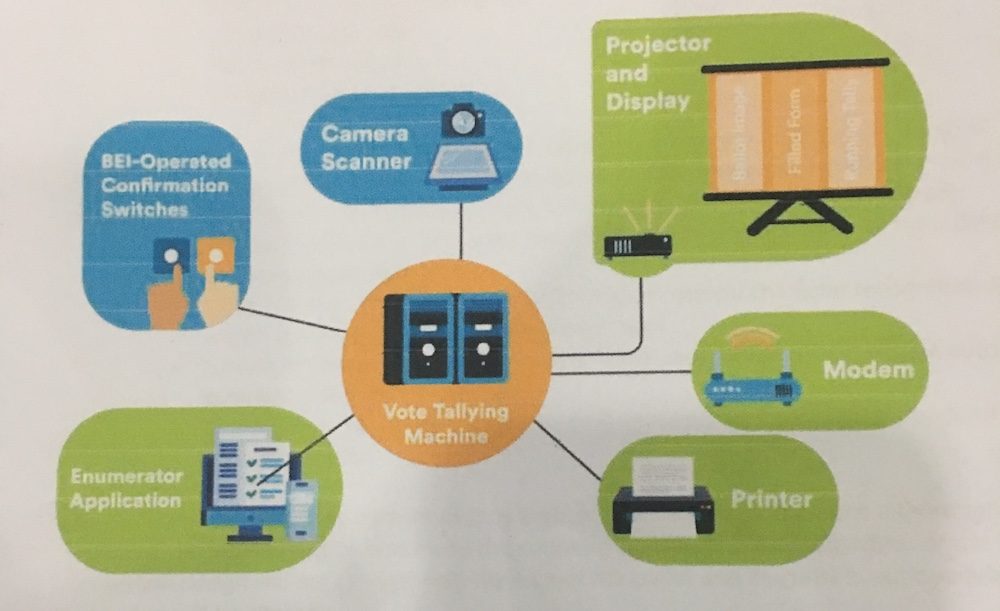SUMMARY
This is AI generated summarization, which may have errors. For context, always refer to the full article.

MANILA, Philippines – Delays in the transmission of results in the 2019 elections has prompted the Department of Information and Communications Technology (DICT) to think of new ways to hold future elections.
The DICT claims its proposed way is faster, more transparent, and generally more superior than the automated elections Filipinos have been accustomed to.
In a briefing on Friday, June 21, DICT Acting Secretary Eliseo Rio Jr proposed a hybrid system that incorporates the speed of vote counting machines (VCM) and the transparency of manual counting ballots.
Rio also said that the proposed system is designed to avoid over-voting, which became a major issue in the previous elections, as millions of votes were not counted because of this.
“Injustice is an understatement when the will of the people is hostaged by the inability of the vote counting machines to accommodate infirmities, all in the name of speed,” Rio said.
Rio said the DICT initiated this move as President Rodrigo Duterte slammed the recent elections due to transmission delays. (READ: The ‘long night:’ Filipinos online react to initial 2019 election results)
How votes will be cast
The DICT presented 3 possible ways for Filipinos to cast their vote as well as how the votes will be counted and transmitted.
Free hand. Voters write the names manually on the ballots. The ballots will then be scanned by a vote tallying machine (VTM) which uses optical character recognition.
Here are some of the concepts the DICT presented.
— Ralf Rivas (@RalfRivas) June 21, 2019
FREE HAND- voters write the names manually. Ballots will have a QR code. The QC code ensures that no matter how many times the ballot is placed in VCMs, it won’t be counted more than once. @rapplerdotcom pic.twitter.com/1OIy4hgAGo
Barcode. Voters place barcode stickers of candidates on the ballot. The ballot will then be scanned by the VTM.
BARCODE STICKERS- Voters peel off barcode stickers and place it on the ballot. @rapplerdotcom pic.twitter.com/Y0g5b4HddI
— Ralf Rivas (@RalfRivas) June 21, 2019
Scholastic exam style. Similar to the previous elections, voters shade circles to select candidates and use the vote counting machines of Smartmatic. However, the ballot follows a format similar to a lotto ticket.
The ballot will no longer show the name of candidates. Instead, the ballot will only have numbers for voters to shade. For example, if a certain senator is assigned with the number 1, the voter will shade the circles of 0 and 1 to reflect the vote. If the senator’s number is 22, the voter shades 2 circles under the second column.
SCHOLASTIC EXAM— Voters shade the number of the candidate. But unlike the current ballots, the DICT says this format will prevent over voting. @rapplerdotcom pic.twitter.com/JBs4e7kF4p
— Ralf Rivas (@RalfRivas) June 21, 2019
All ballots will also have a QR code. This means that a ballot can only be counted once by the machine. No matter how many times a ballot goes in a machine, the vote will no longer be counted again.
How votes will be counted
The DICT proposed that voters would no longer feed the ballots into machines. Instead, ballots will be kept in a box and will be fed in machines once the voting period ends.
What is unique this time is that observers and election inspectors would be able to see each ballot and check whether the machine was able to accurately count the votes.
Ballots would be flashed on a projector. The count of the machine would also be shown on the screen.

Election inspectors will then press a button to signify that the ballot was counted correctly.
Rio said they estimated that each ballot inspection would last around 30 seconds.
The DICT chief said the proposed system was crowdsourced and took into account the problems encountered during the May 2019 elections.
Rio said the public would get to see more of the prototype in the technical fair to be led by the Commission on Elections on July 15. – Rappler.com
Add a comment
How does this make you feel?
There are no comments yet. Add your comment to start the conversation.